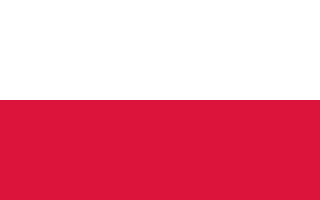
Poland competed at the 1980 Summer Olympics in Moscow, USSR. 306 competitors, 232 men and 74 women, took part in 162 events in 21 sports.

Poland competed at the 1988 Summer Olympics in Seoul, Korea. Poland returned to the Summer Olympic Games after having boycotted the 1984 Summer Olympics. 143 competitors, 111 men and 32 women, took part in 105 events in 19 sports.

Bulgaria competed at the 1964 Summer Olympics in Tokyo, Japan. 63 competitors, 56 men and 7 women, took part in 56 events in 9 sports.

Bulgaria competed at the 1960 Summer Olympics in Rome, Italy. 98 competitors, 89 men and 9 women, took part in 66 events in 12 sports.

Bulgaria competed at the 1956 Summer Olympics in Melbourne, Australia and Stockholm, Sweden.
The freestyle heavyweight was one of five freestyle wrestling weight classes contested on the Wrestling at the 1908 Summer Olympics programme. Like all other wrestling events, it was open only to men. The heavyweight was the heaviest weight class, allowing wrestlers over 73 kilograms (161 lb). Eleven wrestlers competed; nine from Great Britain, one from Norway, and one from the United States. The competition was held on July 23, 1908.

Sweden competed at the 1928 Summer Olympics in Amsterdam, Netherlands. 100 competitors, 87 men and 13 women, took part in 66 events in 11 sports.
The men's freestyle light heavyweight was a Catch as Catch Can wrestling, later freestyle, held as part of the Wrestling at the 1920 Summer Olympics programme. It was the first appearance of the weight class. Light heavyweight was the second-heaviest category, and included wrestlers weighing up to 80 kilograms.
The men's freestyle heavyweight was a Catch as Catch Can wrestling, later freestyle, event held as part of the wrestling at the 1920 Summer Olympics programme. It was the third appearance of the weight class. Heavyweight was the heaviest category, and included wrestlers weighing over 80 kilograms.
The men's freestyle light heavyweight was a freestyle wrestling event held as part of the Wrestling at the 1924 Summer Olympics programme. It was the second appearance of the event. Light heavyweight was the second-heaviest category, including wrestlers weighing from 79 to 87 kilograms.
The men's freestyle heavyweight was a freestyle wrestling event held as part of the Wrestling at the 1924 Summer Olympics programme. It was the fourth appearance of the event. Heavyweight was the heaviest category, including wrestlers weighing over 87 kilograms.
The men's freestyle bantamweight was a freestyle wrestling event held as part of the Wrestling at the 1928 Summer Olympics programme. It was the fourth appearance of the event. Bantamweight was the lightest category, including wrestlers weighing up to 56 kilograms. Kaarlo Mäkinen, the silver medalist at the previous Games, won the event.
The men's freestyle featherweight was a freestyle wrestling event held as part of the Wrestling at the 1928 Summer Olympics programme. It was the fifth appearance of the event. Featherweight was the second-lightest category, including wrestlers weighing up to 61 kilograms. Kustaa Pihlajamäki, who had won gold in the lighter bantamweight class in 1924, took silver.
The men's freestyle lightweight was a freestyle wrestling event held as part of the Wrestling at the 1928 Summer Olympics programme. It was the fifth appearance of the event. Lightweight was the third-lightest category, including wrestlers weighing up to 65 kilograms. Eino Leino won his third Olympic medal, a bronze to go with his 1920 middleweight gold and 1924 welterweight silver.
The men's freestyle welterweight was a freestyle wrestling event held as part of the Wrestling at the 1928 Summer Olympics programme. It was the third appearance of the event. Welterweight was the median category, including wrestlers weighing up to 72 kilograms. Arvo Haavisto, a 1924 bronze medalist in the lightweight category, won the tournament.
The men's freestyle middleweight was a freestyle wrestling event held as part of the Wrestling at the 1928 Summer Olympics programme. It was the fourth appearance of the event. Middleweight was the third-heaviest category, including wrestlers weighing up to 79 kilograms.
The men's freestyle light heavyweight was a freestyle wrestling event held as part of the Wrestling at the 1928 Summer Olympics programme. It was the third appearance of the event. Light heavyweight was the second-heaviest category, including wrestlers weighing up to 87 kilograms.
The men's freestyle light heavyweight competition at the 1932 Summer Olympics in Los Angeles took place from 1 August to 3 August at the Grand Olympic Auditorium. Nations were limited to one competitor. This weight class was limited to wrestlers weighing up to 87kg.
The men's freestyle heavyweight competition at the 1932 Summer Olympics in Los Angeles took place from 1 August to 3 August at the Grand Olympic Auditorium. Nations were limited to one competitor. This weight class was not limited by maximum weight and was open to wrestlers above 87kg.




